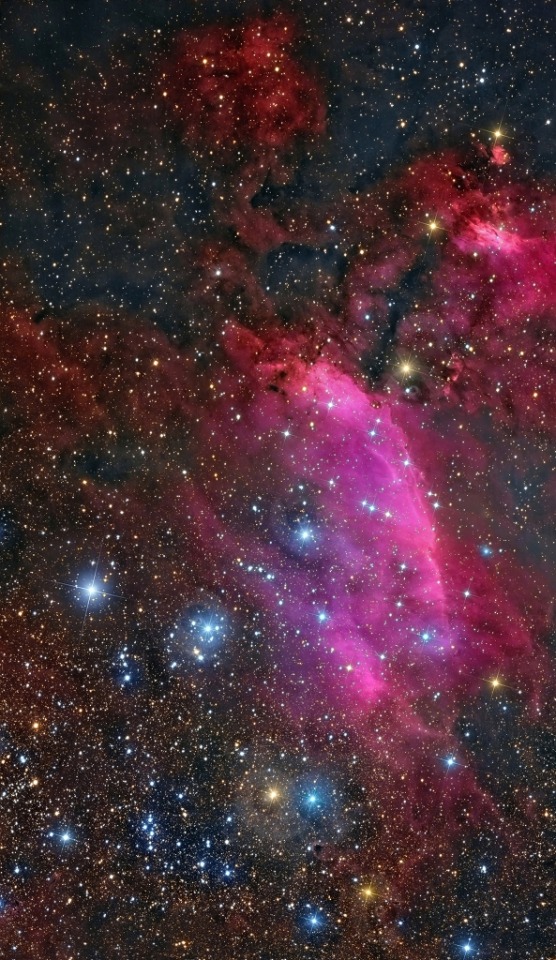Nu Scorpii

Nu Scorpii
One of the most interesting areas of the night sky, Scorpius holds a myriad of nebula and beautifully contrasting coloured stars.
Moving towards the tail, you'll find Nu Scorpii a binary star system 7 stars.

If that alone isn't enough to get your mind wondering how all these stars are orbiting each other, the star system itself is the eye of a horses head ! Albeit a nebulous head.

IC 4592 is a reflective nebula, with the blue light reflected from fine dust, that blue light is coming from the Nu Scorpii system above.
Pull out and you'll see the whole region contains many star forming areas with reflective features.

More Posts from Ad-astra-affecte-spe and Others

L1527 IRS - Protostar
Stars form when bodies of dust and gas create enough mass to create a gravitational effect that's able to then pull in more gas, the process continues and the mass increases until the pressure at the centre is sufficient for fusion to begin.
There's many examples of protostars, in fact back in 2012, NASA’s Spitzer Space Telescope focused in on L1527 IRS, believed at the time to be the youngest forming star ever found.

Recently, the JWST re-visited this protostar, and the title image was the result.
The forming star cannot be visually spotted, but is thought to be around 20-40% the mass of our own Sun already.

If you look closely, you can see there's a dark patch in the centre, this is actually the accretion disk around the newly formed star, what is left over after the formation, may go on to form the planets, in fact, they may be actually starting to be created already, as recent evidence does point to planets being born around the same time as the star does in many cases.
The protostar is only 450 light years from Earth in the Constellation of Taurus, and is thought to be around 100,000 years old, a blink of an eye in the life of a star, particularly of this mass.
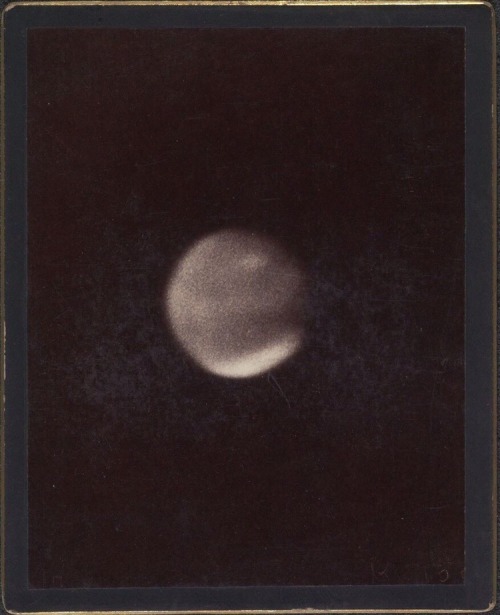
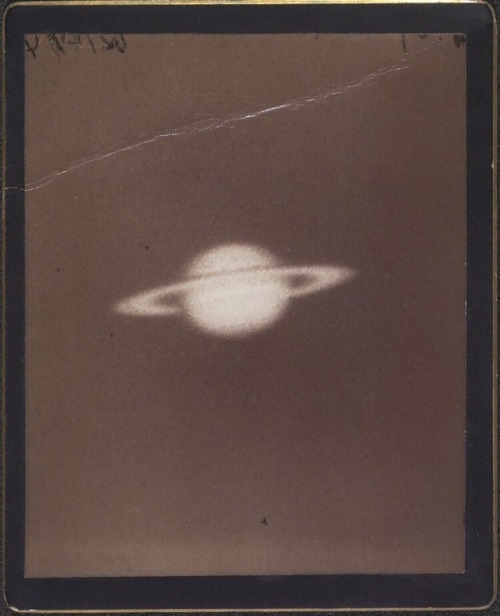
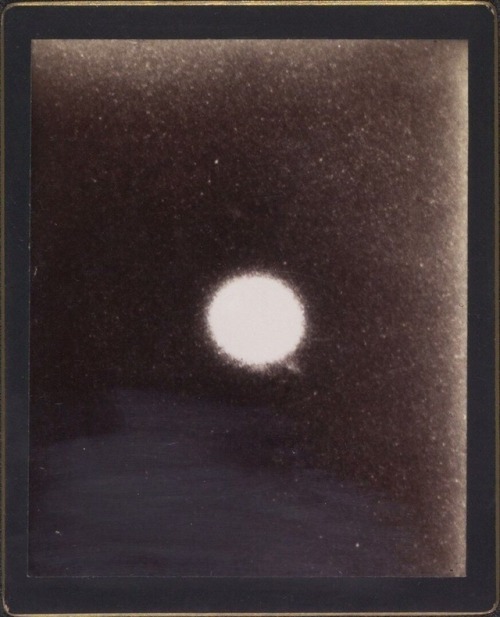
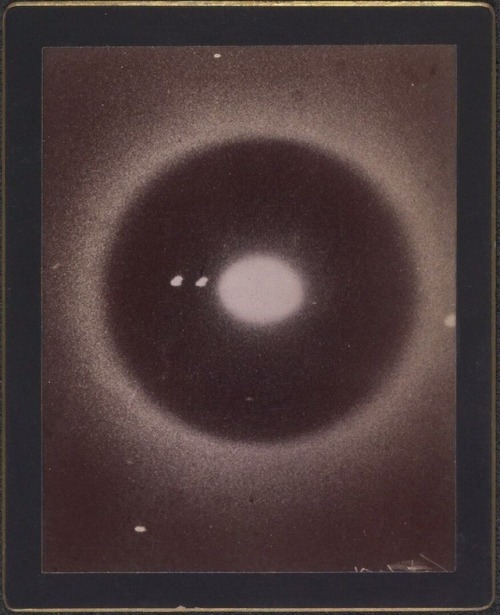
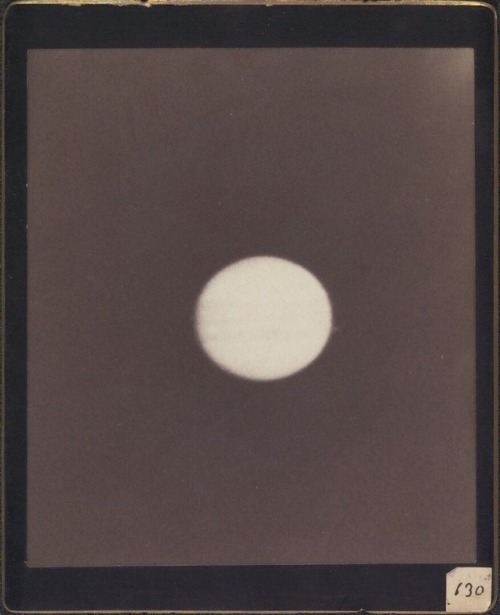
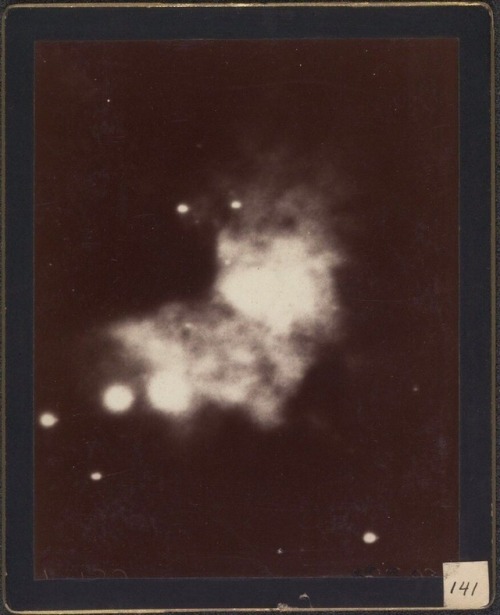
Astronomical photographs, Harvard College Observatory, Cambridge, 1890-1920

M42, Great Orion

Andromeda, If It Was Brighter
One of the largest structures in the night sky is visible with the naked eye, but if you live in a city, it's literally hiding just out of sight. Even in a dark area, it's not the easiest to immediately see, but the above image has brightened it up for us, to show us what the galaxy would look like, if only the sky was dark enough and the galaxy was a bit brighter.
The moon comparison is the best one, that is something we can all see in the night sky (unless you live in the UK, where you see mostly clouds).
Now imagine that galaxy stretching several moon-spans across the sky. That I hope gives you a minor taste of what it's like when using a small telescope or even binoculars, you first come across it.
If you live in the Northern Hemisphere, then it's well worth the search.

Near sunset, look for 3 objects which should be easy to locate, Venus and Jupiter (I'll come to this in a moment) low in the sky, the W of Cassiopeia and the Seven Sisters (Pleiades), and from that, you should find the location. Bare in mind it's several times the size of the moon, so you don't have to be too accurate, but if you can find the stars of Andromeda, that will help refine your search.

And finally that brings me on to the real star of the sky currently, Jupiter and Venus, the two brightest planets, very close together.
In fact, if you do have a really good pair of binoculars, or small telescope, this is a great time to view them. Venus often appears as a crescent like a phase of the moon, and Jupiter has it's 4 Galilean moons to spot.

Happy Spotting !

Boo! Did we get you? 🎃
This solar jack-o-lantern, captured by our Solar Dynamics Observatory (SDO) in October 2014, gets its ghoulish grin from active regions on the Sun, which emit more light and energy than the surrounding dark areas. Active regions are markers of an intense and complex set of magnetic fields hovering in the sun’s atmosphere.
The SDO has kept an unblinking eye on the Sun since 2010, recording phenomena like solar flares and coronal loops. It measures the Sun’s interior, atmosphere, magnetic field, and energy output, helping us understand our nearest star.
Grab the high-resolution version here.
Make sure to follow us on Tumblr for your regular dose of space!


Messier 45: The Pleiades
Nick Fritz on Instagram

2023 February 25
Crescent Moon Occultation Image Credit & Copyright: Fefo Bouvier
Explanation: On February 22, a young Moon shared the western sky at sunset with bright planets Venus and Jupiter along the ecliptic plane. The beautiful celestial conjunction was visible around planet Earth. But from some locations Jupiter hid for a while, occulted by the crescent lunar disk. The Solar System’s ruling gas giant was captured here just before it disappeared behind the the Moon’s dark edge, seen over the RÃo de la Plata at Colonia del Sacramento, Uruguay. In the serene river and skyscape Venus is not so shy, shining brightly closer to the horizon through the fading twilight. Next week Venus and Jupiter will appear even closer in your evening sky.
∞ Source: apod.nasa.gov/apod/ap230225.html
-
 rand0maccount14 liked this · 1 year ago
rand0maccount14 liked this · 1 year ago -
 origami1810 liked this · 1 year ago
origami1810 liked this · 1 year ago -
 boodl reblogged this · 1 year ago
boodl reblogged this · 1 year ago -
 sorrowsfallallaround liked this · 1 year ago
sorrowsfallallaround liked this · 1 year ago -
 akheloisthemoon liked this · 1 year ago
akheloisthemoon liked this · 1 year ago -
 kcrb0202 reblogged this · 1 year ago
kcrb0202 reblogged this · 1 year ago -
 kcrb0202 liked this · 1 year ago
kcrb0202 liked this · 1 year ago -
 the-yearning-astronaut reblogged this · 1 year ago
the-yearning-astronaut reblogged this · 1 year ago -
 manebioniclegali reblogged this · 1 year ago
manebioniclegali reblogged this · 1 year ago -
 azurewings3 liked this · 1 year ago
azurewings3 liked this · 1 year ago -
 manuel82 liked this · 1 year ago
manuel82 liked this · 1 year ago -
 cronostitan liked this · 1 year ago
cronostitan liked this · 1 year ago -
 arbiewebbjr liked this · 1 year ago
arbiewebbjr liked this · 1 year ago -
 hazele-omega liked this · 1 year ago
hazele-omega liked this · 1 year ago -
 awesomeatomiccollector liked this · 1 year ago
awesomeatomiccollector liked this · 1 year ago -
 nessieac liked this · 1 year ago
nessieac liked this · 1 year ago -
 soesearching reblogged this · 1 year ago
soesearching reblogged this · 1 year ago -
 soesearching liked this · 1 year ago
soesearching liked this · 1 year ago -
 angelfish-777 reblogged this · 1 year ago
angelfish-777 reblogged this · 1 year ago -
 pipuisci reblogged this · 1 year ago
pipuisci reblogged this · 1 year ago -
 pipius liked this · 1 year ago
pipius liked this · 1 year ago -
 soul-of-spoopy liked this · 1 year ago
soul-of-spoopy liked this · 1 year ago -
 adhumla liked this · 1 year ago
adhumla liked this · 1 year ago -
 silvereyedowl liked this · 1 year ago
silvereyedowl liked this · 1 year ago -
 eldritchteacozy liked this · 1 year ago
eldritchteacozy liked this · 1 year ago -
 andromeda1023 reblogged this · 1 year ago
andromeda1023 reblogged this · 1 year ago -
 andromeda1023 liked this · 1 year ago
andromeda1023 liked this · 1 year ago -
 fushinusucariasblog liked this · 1 year ago
fushinusucariasblog liked this · 1 year ago -
 ad-astra-affecte-spe reblogged this · 1 year ago
ad-astra-affecte-spe reblogged this · 1 year ago -
 zeviceroy reblogged this · 1 year ago
zeviceroy reblogged this · 1 year ago -
 zeviceroy reblogged this · 1 year ago
zeviceroy reblogged this · 1 year ago -
 skylobster reblogged this · 1 year ago
skylobster reblogged this · 1 year ago -
 ventusignisumbra reblogged this · 1 year ago
ventusignisumbra reblogged this · 1 year ago -
 ventusignisumbra liked this · 1 year ago
ventusignisumbra liked this · 1 year ago -
 nikkachan liked this · 1 year ago
nikkachan liked this · 1 year ago -
 teenagecoffeebeliever liked this · 1 year ago
teenagecoffeebeliever liked this · 1 year ago -
 wonders-of-the-cosmos liked this · 1 year ago
wonders-of-the-cosmos liked this · 1 year ago -
 red-umbrella-811 reblogged this · 1 year ago
red-umbrella-811 reblogged this · 1 year ago -
 red-umbrella-811 liked this · 1 year ago
red-umbrella-811 liked this · 1 year ago -
 spacetimewithstuartgary liked this · 1 year ago
spacetimewithstuartgary liked this · 1 year ago -
 spacetimewithstuartgary reblogged this · 1 year ago
spacetimewithstuartgary reblogged this · 1 year ago -
 bibliophiliosaurus reblogged this · 1 year ago
bibliophiliosaurus reblogged this · 1 year ago -
 anorakparkafan reblogged this · 1 year ago
anorakparkafan reblogged this · 1 year ago -
 anorakparkafan liked this · 1 year ago
anorakparkafan liked this · 1 year ago -
 knarsisus reblogged this · 1 year ago
knarsisus reblogged this · 1 year ago

★•Astronomy, Physics, and Aerospace•★ Original and Reblogged Content curated by a NASA Solar System Ambassador
204 posts

